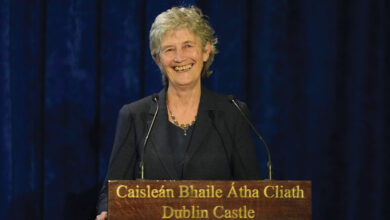Transition to a low carbon future


The headlines have been dominated by extreme weather events, reminding us of the destructive power of an overly energetic climate system. Weather related disasters are estimated to cost $250 billion per year. The human cost is even greater. Around 30,000 people die annually, and 4.1 billion have been adversely affected since 1995. Humanity is paying a very high price for our collective failure to tackle climate change, writes Declan Allison of Friends of the Earth.
The science tells us we must make large and rapid cuts in greenhouse gas emissions, in the region of an 80 per cent reduction by 2030, and a 90-95 per cent reduction by 2050. Energy is one area in which we can make those gains, not just in generation, but also in efficiency and demand management. We should be putting policies in place to ensure the energy sector makes cuts of about 10 per cent per year from 2025, enabling the sector to be zero carbon by 2050. That entails a rapid transition away from fossil fuels.
In order to have a fighting chance of keeping the global temperature rise below 2oC, average emissions from electricity generation should be 50gCO2/kWh by 2030. Natural gas, the ‘clean’ fossil fuel, however, produces between 350gCO2/kWh and 450gCO2/kWh. In contrast, the life-cycle emissions from renewable technologies range from 5 to 15gCO2kWh. There is simply no place for fossil fuels in a carbon constrained future.
The transition away from fossil fuels to a low carbon future is achievable and cost effective. The price of renewable energy is dropping rapidly. Earlier this year the World Economic Forum reported that renewable energy had reached a tipping point, with wind and solar being competitive with, or cheaper than, new fossil fuels. Combined with the falling cost of electricity storage, the rapid transition of the energy sector to low-carbon electricity is now a viable option.
Households, organisations, and businesses could produce their own energy, or store energy in times of oversupply. A 2016 report by Friends of the Earth Europe estimated that by 2030 15 per cent of the UK population could be involved as ‘energy citizens’, rising to 35 per cent in 2050, producing 19 per cent and 44 per cent of our electricity respectively.
The Green New Deal was a proposal for a programme of public works to improve the energy efficiency of homes. If adopted, the plan would have seen the creation of thousands of quality long-term jobs, reduced fuel bills helping to tackle fuel poverty, and cut greenhouse gas emissions. The scheme could easily be applied to the public sector too, bringing every school, hospital, council office, leisure centre, and civil service building up to high levels of energy efficiency.
Unfortunately, the Green New Deal was never adopted, despite majority cross-party support. It’s a plan that never went out-of-date though, and is now more relevant than ever.
The Green New Deal is just one policy initiative that should be implemented. We also need to adopt a presumption against new fossil fuel development. That means revoking existing exploration licences for hydrocarbons and not issuing any more. The statutory duty to promote gas should be repealed. Instead, we should invest in a strong, smart electricity grid to move space and water heating to electricity. We will have to do this sooner or later. It makes no sense to first invest time and money in a gas network, only to have to replace it later with an electricity network. Building regulations should be amended to the highest energy efficiency levels. There is no technical barrier to all new buildings being zero carbon.
We know what we have to do, we have the technology to achieve it, and we have seen the policies in action elsewhere. We have no excuse for tardiness.





